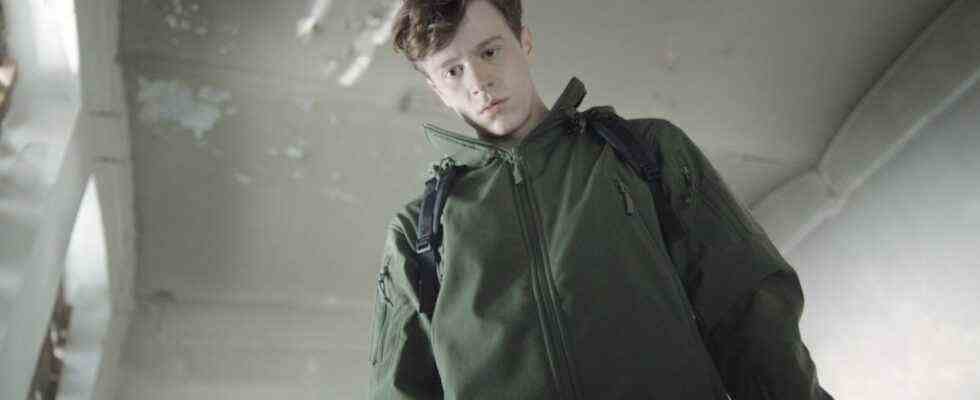Camouflage colors make 17-year-old Paul almost invisible and also blur his days. The olive and beige tones of his clothes merge with the earth-colored school corridors that he crosses during the day, but also with the meadows and roadsides that he roams in his free time. Unnoticed, he sneaks through other people’s lives, rummaging through their things as if he could use it to acquire his own personality.
Director Christian Schäfer called his first feature film “Dark Clouds”, and the sadness doesn’t just cloud Paul’s identity. Here in the nameless province everything seems subdued. Even when stones fall from a highway bridge, Paul’s classmate Dala is molested and a boy goes missing, there is a strange calm in the small town.
Schäfer and his screenwriter Glenn Büsing don’t need much more action to create an atmosphere of oppression that seems to pose a danger in even the most inexperienced small talk. Whether Dala asks him kindly about his poetry or his stepmother questions him about his future plans, Paul is on guard. Like the facets of a kaleidoscope, Schäfer and Büsing assemble Paul’s identity from a multitude of fragments of perspective and keep them in constant motion. Photographs and mirror images are omnipresent in his narrow world and create a feeling of constant observation and of being caught. Seeing and being seen is of central importance even for the almost invisible Paul.
“I actually always tried not to look in the mirror – and if I did, I didn’t breathe.”
For an art project, he takes his father’s analog camera with him on his tours and doesn’t notice that Dala (Valerie Stoll) secretly makes Polaroids of him. Paul only finds the pictures when she rummages through her handbag. She is interested in this quiet classmate and trusts him because he is different from the noisy self-promoters in the class. “I actually always tried not to look in the mirror – and if I did, I didn’t breathe.” He says this in amazement when Dala asks him if he used to dress up to play roles when he was a kid. Biology teacher Bulwer sees him as a younger version of himself: misunderstood and looking for his own form of expression. Paul is less of an active performer than a featureless projection surface.
What is particularly impressive is the control with which Jonas Holdenrieder plays his first leading role and Paul keeps it precisely on the fine line between conformist everyone and sociopathic nobody. The camera keeps clinging oppressively to his face, to this expressionlessness that tempts others to transfer their own feelings, desires and needs onto him. However, Holdenrieder does not simply play this stillness, but the inner struggle that Paul wages in order to appear composed and calm. Always a little too automatically, the corners of his mouth curl up in a noncommittal smile, he holds other looks just a little too long not to create discomfort as well. This boy is believed to be capable of both: the insecure loner, but also the psychopath.
This unsettled perception is one of the strengths of this film. Director Schäfer allows them to emerge in the spaces between the images and thereby shakes confidence in people’s knowledge of human nature and viewing habits, which viewers often rely on. So “Trübe Wolken” wafts emotionally between the horror of smooth Kubrick hotel corridors and the Depression of Coming of Age in the films of Gus Van Sant. Floating freely between coming-of-age drama and psychological thriller, the film is an impressively self-confident cinema debut in its ambivalence.
Cloudy clouds, Germany 2021 – Director: Christian Schäfer. Screenplay: Glenn Busing. Camera: Sabine Sina Stephan. Editing: Tabea Hannappel, Peter Jordan, Claudia Geisler-Bading, Max Schimmelpfennig. With: Jonas Holdenrieder, Devid Striesow, Valerie Stoll. Salzgiver, 104 minutes. Theatrical release: February 24, 2022.

